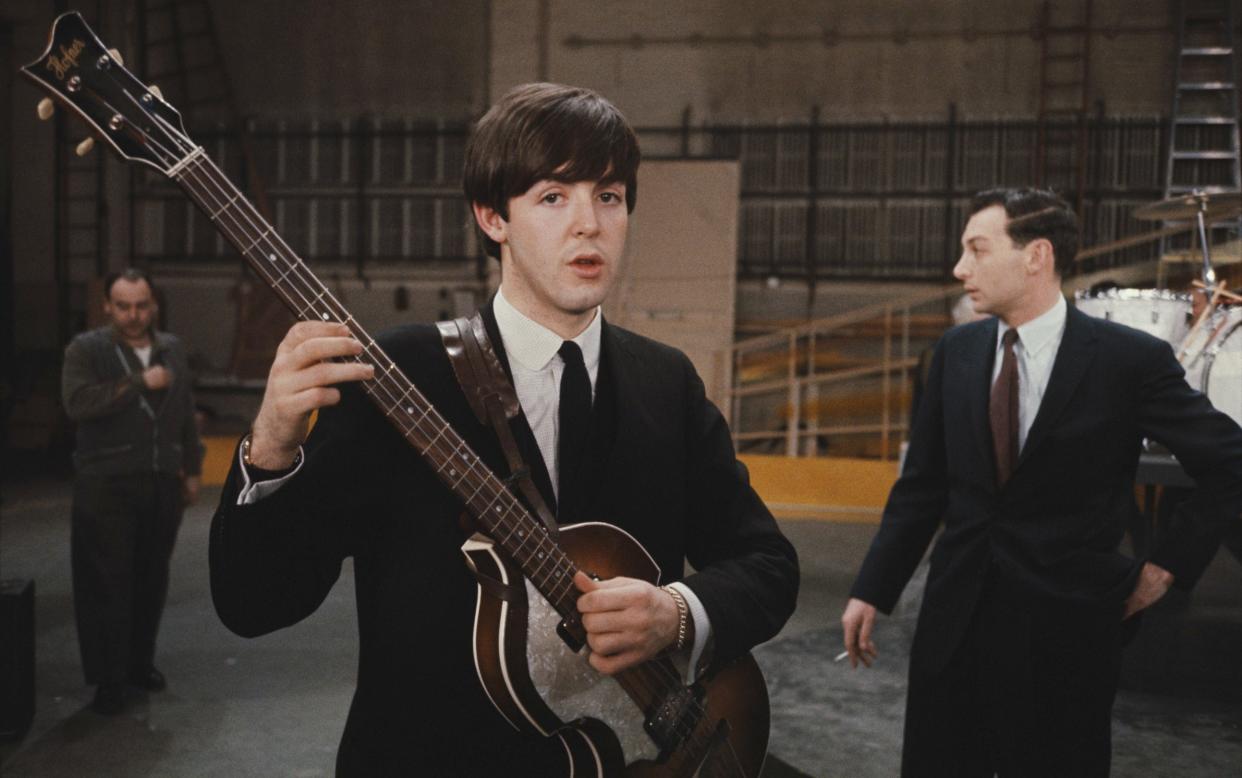The secret to Paul McCartney’s genius? It’s all about that bass

- Oops!Something went wrong.Please try again later.
Paul McCartney made the Hofner bass guitar famous, not the other way around. Indeed, it was McCartney who made bass players cool, giving them a status in rock almost equal to that of lead guitarists. That is why the new global search for McCartney’s 1961 Hofner 500/1 Violin Bass – the most important bass in music history which disappeared later that decade and has now been found – is causing such interest.
Before McCartney there had simply never been a famous bass player. The star musicians in bands were singers, and if they also played an instrument, it was invariably guitar or piano. The bassist was part of the rhythm section, locked tight with the drummer on a four string instrument widely deemed (not least amongst musicians) to be the poor relation of the six string guitar.
Ironically, McCartney (who started out as one of three Beatles guitarists) got the job of bassist because he was arguably the most accomplished musician in the group, able to step into the role (albeit somewhat reluctantly) when original bassist Stuart Sutcliffe left. What he brought to it was a musical imagination and versatility that expanded the possibilities of the instrument, pulling off the genuinely impressive trick of singing while simultaneously playing complex basslines. It is still comparatively rare in popular music, although after McCartney would come such bass stars as Jack Bruce of Cream, Geddy Lee of Rush, and Sting.
McCartney became famous primarily as a long-haired pin up pop star with incredible vocal character and range who also happened to play bass. Left-handed! The sight of this sexy young Beatle swinging his cute, violin shaped bass as he sang shrieking “ooohs” on She Loves You, or deftly playing a nimble walking bassline as he crooned effortlessly through All My Loving changed the status of the bass guitar forever.
McCartney bought the Hofner Scott 500/1 bass because it was cheap, and because its symmetrical violin shaped body looked elegant held upside down to suit his left-handed playing (where most bass guitars would look imbalanced). The Hofner is all mid-tone with little depth and no resonance or sustain, and you have to play it hard with a pick to get a strong, thumping sound out of it. But the limitations of the instrument helped McCartney develop a distinctive busy style.
His bass is constantly driving through early Beatle songs. McCartney’s melodiousness shines as his right hand moves quickly about the fretboard, picking out harmonic notes and creating counter melodies within songs in a state of constant momentum, with rhythmic shifts and harmonic tweaks to keep listeners’ ears alert. McCartney’s creativity composing basslines in an astonishing variety of song styles made him the most influential bassist of his generation. There have certainly been better bass players, but arguably none as versatile.
The Hofner is indelibly associated with McCartney, and the only place you are likely to see one being played now is at gigs by Sixties cover bands and McCartney himself. No other prominent bassists have taken it up, and even McCartney often swapped it for Rickenbackers and Fender Jazz basses on later Beatles recordings.
Nevertheless, he is wielding a trusted Hofner with considerable panache on the final Beatles live performance on the Apple rooftop in 1969. Everything that’s great about McCartney’s bass playing is on display, from the clipped boogie of Get Back to the slippery runs of Don’t Let Me Down. In McCartney’s hands, bass ceased to be a lowly supporting instrument and became a star in its own right.

